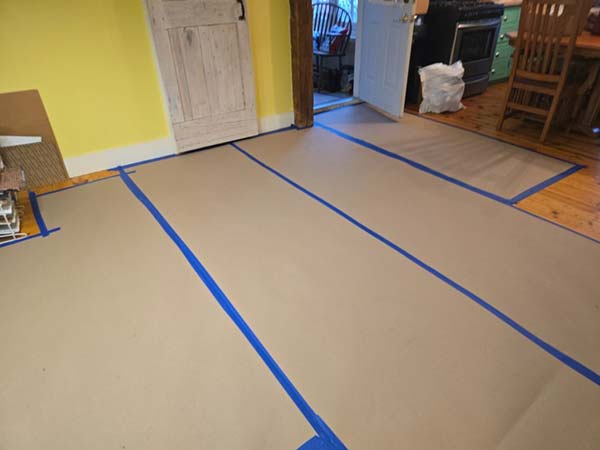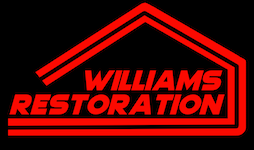FAQ
What Are the Immediate Steps After Discovering Water Damage?
When you discover water damage, prioritize safety by evacuating unsafe areas. Stop the water source if possible, such as turning off the main water supply. Call Williams Restoration immediately for assistance. Document the damage with photos for insurance purposes, and remove valuables from the affected area if it is safe to do so.

What Happens During the Initial Assessment of Water Damage?
Our technicians thoroughly inspect affected areas, identify the water source, classify the water type (clean, gray, or black), and use advanced tools like moisture meters and thermal imaging to detect hidden water. We also assess structural and content damage, develop a restoration plan, and provide a detailed explanation with an estimated timeline.
What Is the Water Damage Restoration Process?
The process typically includes water extraction, cleaning and sanitizing, structural drying, and a final inspection. We tailor our approach to each unique situation to achieve the best possible outcome.
What Does IICRC Certification Mean?
The Institute of Inspection Cleaning and Restoration Certification (IICRC) ensures adherence to high industry standards. Our certification (70137126) guarantees that our technicians are trained in the latest techniques and technologies for water damage restoration.
How Do You Handle Mold Issues Related to Water Damage?
Our mold remediation process includes containment, HEPA air filtration, surface cleaning and disinfection, and post-remediation testing. Mold prevention is a key focus during the restoration process to minimize risks.
Do You Work with Insurance Companies?
Yes, we collaborate closely with insurance companies to streamline the claims process. We document damage, provide detailed reports, and communicate directly with your insurance adjuster to ensure fair coverage.
How Long Does Water Damage Restoration Take?
The timeline varies based on the extent of the damage and water type. Minor damage may take a few days, while severe cases can take weeks. We work efficiently to minimize disruption and keep you informed throughout the process.
What Safety Measures Are Taken During Restoration?
We prioritize safety by using personal protective equipment (PPE), ensuring electrical safety in wet areas, employing EPA-approved cleaning products, following OSHA guidelines, and providing safety information to occupants.
Do You Offer Preventive Services and Inspections?
Yes, we provide water damage risk assessments, moisture inspections, maintenance tips, and consultations on ventilation and humidity control to help prevent future water damage.
Can Personal Belongings Be Salvaged?
We strive to restore personal belongings, including furniture, documents, electronics, and sentimental items. Success depends on water type, exposure duration, and material. Each item is assessed for restoration options.
How Do You Manage Sewage Backup Situations?
Sewage backups are handled with care due to health risks. We secure the area, remove contaminated water, and disinfect thoroughly with EPA-approved products to restore safety.
What Equipment Is Used for Water Extraction and Drying?
We use truck-mounted and portable water extraction units, thermal imaging cameras for hidden moisture detection, and moisture meters to monitor drying progress efficiently.
How Do You Address Odors from Water Damage?
We use HEPA air scrubbers, ozone treatments, hydroxyl generators, and thermal fogging to neutralize odors and eliminate them at their source for a fresh environment.
How Do You Handle Water Damage in Confined Spaces?
For confined areas, we use specialized equipment and remote cameras for inspections. If necessary, access points are created to ensure complete drying and restoration.
Do You Handle Commercial Property Water Damage?
Yes, we have extensive experience with commercial water damage restoration. We minimize business disruptions, manage large-scale damage, and comply with industry regulations to restore operations quickly.
How Can Water Damage Be Prevented?
Prevent water damage by inspecting and maintaining plumbing, roof, gutters, and downspouts; installing and maintaining sump pumps; monitoring appliances for leaks; and knowing your main water shut-off valve location.
How Quickly Can Mold Grow After Water Damage?
Mold can develop within 24-48 hours after water damage. Our rapid response and efficient drying techniques minimize the risk of mold growth.
How Do You Determine Restoration vs. Replacement?
Materials are assessed based on water type, exposure duration, material porosity, and the cost-effectiveness of restoration compared to replacement.
What Sets Williams Restoration Apart?
We offer a family-owned approach, IICRC-certified services, 24/7 emergency response, comprehensive restoration solutions, and a commitment to customer satisfaction and communication.
Do You Respond to Natural Disasters?
Yes, we handle water damage from natural disasters, offering large-scale extraction and drying services and working with insurance companies on disaster claims.
